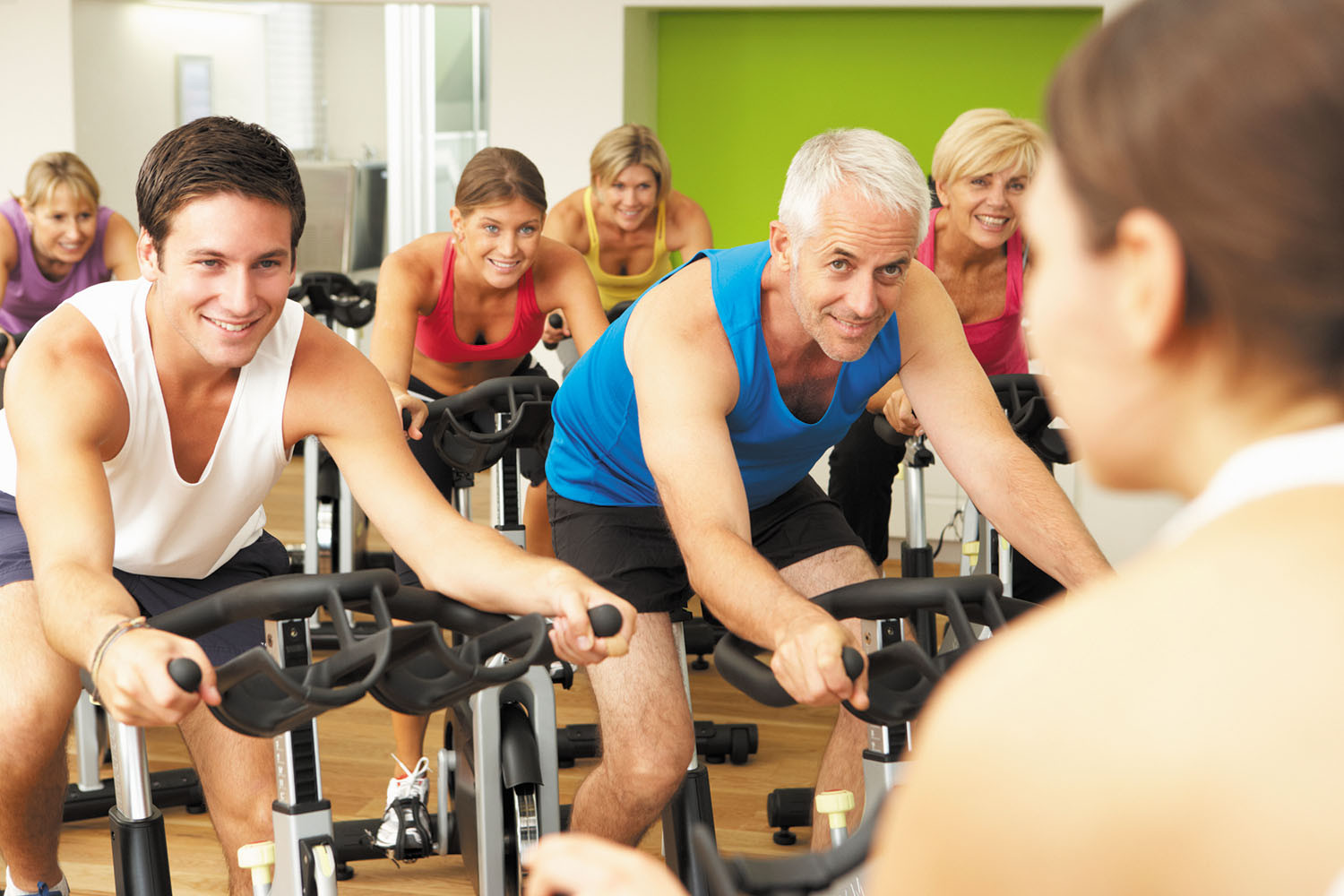Spin class: Incorporating indoor cycling into your fitness routine
This workout is good for the heart and muscles and easy on the joints.
- Reviewed by Howard E. LeWine, MD, Chief Medical Editor, Harvard Health Publishing; Editorial Advisory Board Member, Harvard Health Publishing

Spinning classes — indoor cycling to the beat of motivating music — are more popular than ever. They're staples at most gyms, and there are even entire fitness centers devoted to nothing but spinning. Some even offer senior-only classes.
If you haven't tried this type of workout, you should give it a whirl, as it offers a wide range of benefits.
What is a spin class?
Spinning is a great cardiovascular workout and can help build lower-body muscle strength.
It's also perfect for people who don't enjoy, or have difficulty doing, higher-impact cardio activities like running or even speed walking. Spinning is a low-impact exercise that places less stress on your joints, which makes it ideal for anyone with knee or hip issues or those recovering from orthopedic injuries.
In some ways, spinning can offer more sweat equity than regular cardio. A study in the Journal of Fitness Research compared the effects of two 30-minute spinning sessions with an hour of moderate-intensity exercise among 36 middle-aged people. After six weeks, the people in the spinning group showed more improvement in fitness, leg strength, blood pressure, total cholesterol level, and fat mass compared with the other group.
Group indoor exercise classes also provide an opportunity for socialization, which is linked to maintaining cognitive health and may even lower dementia risk. Surveys taken by spinners prior to and immediately after classes not surprisingly have shown a significant improvement in positive feelings.
Health benefits of indoor cycling
A spinning class is often 45 minutes to an hour long and is led by an instructor who guides the group through a series of heart-pumping workouts. For instance, you might do speed work, where you pedal fast for brief periods followed by periods of rest and recovery. You also may do incline workouts, where you increase the bike's resistance so it feels like you are cycling uphill.
In some ways, spinning can offer more sweat equity than regular cardio. A study in the April 2016 Journal of Fitness Research compared the effects of two 30-minute spinning sessions with an hour of moderate-intensity exercise among 36 middle-aged people. After six weeks, the people in the spinning group showed more improvement in fitness, leg strength, blood pressure, total cholesterol level, and fat mass compared with the other group.
Class rules
Spinning classes are safe for most people. But get your doctor's okay if you have a heart problem or are recovering from an injury or surgery. Once you are more comfortable on the bike, you easily can do your own workouts. But it's best to experience several classes to get a feel for everything before going solo.
To get the most out of spinning and ensure proper safety, follow these guidelines:
Look for proper credentials. Most spinning instructors are certified to teach spinning, often through the same organizations required for personal training certification. "Ask about your instructor's credentials, and look for certifications like Mad Dogg Spinning Instructor Certification, AFAA [Aerobics and Fitness Association of America] Indoor Cycling Certification, or Schwinn Indoor Cycling Certification," says Robidoux.
Get fitted. Spinning bikes vary depending on the manufacturer. Most are designed for the average person but can be individually adjusted. Arrange a separate meeting with an instructor to show you how to adjust handlebar and seat height and position to ensure proper alignment, so you don't put too much strain on your low back and knees. "Also, practice before class to get a feel for the spinning movement," says Robidoux. "Your legs should move in a circle with no jackhammer-like bouncing."
Take it easy at first. People are more likely to injure themselves when they push too hard too soon. Only pedal at a pace that allows you to stay stable in the saddle, and never feel you have to do what everyone else is doing, says Robidoux. "Go at a lower intensity if needed, stay in your comfort zone, and progress at your own pace. It is perfectly fine to skip a workout, recover, and jump back in when you are ready, or do your own thing and just pedal."
Keep it short. Most classes last up to an hour, but it's okay to stay for 20 or 30 minutes until you are more comfortable and your endurance increases.
Don't forget a towel and water. You are going to sweat, so have a towel handy to wipe your brow and a water bottle to stay hydrated. Also, invest in a pair of cycling shorts, which can make sitting on the saddle more comfortable.
Image: © owdenimages/Thinkstock
About the Reviewer

Howard E. LeWine, MD, Chief Medical Editor, Harvard Health Publishing; Editorial Advisory Board Member, Harvard Health Publishing
Disclaimer:
As a service to our readers, Harvard Health Publishing provides access to our library of archived content. Please note the date of last review or update on all articles.
No content on this site, regardless of date, should ever be used as a substitute for direct medical advice from your doctor or other qualified clinician.















